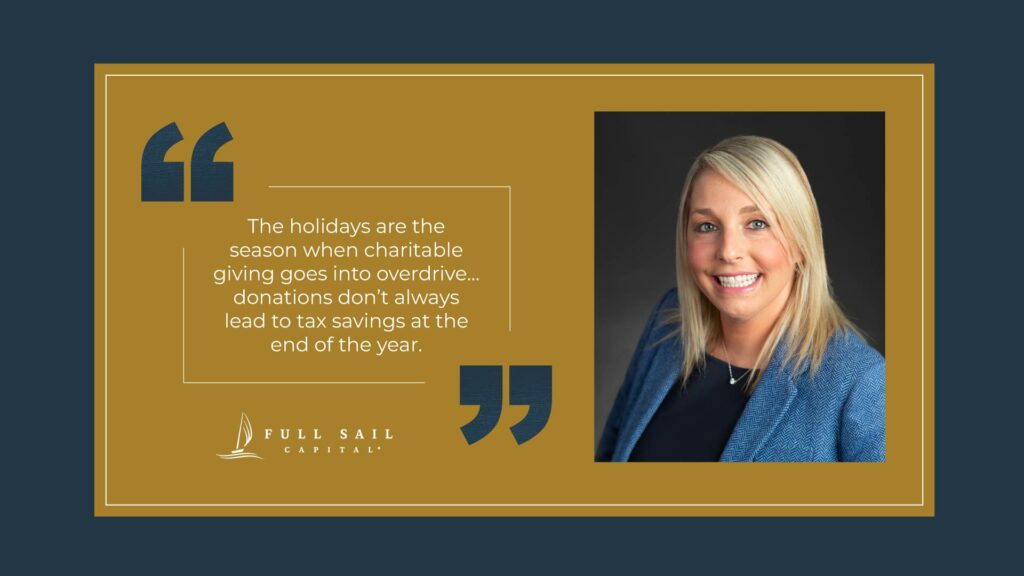The holidays are the season when charitable giving goes into overdrive with nearly half of all annual giving reported during the month of December.
And while a lot of people think tax benefits are the primary motivator behind giving this time of year, research suggests there’s more to it than that. People who give tend to feel satisfaction, and they experience joy from helping others.
While it’s good to know that people are going to give, whether there’s a tax benefit or not, we can still take a moment with a financial advisor and look for ways to give even more to charity by considering our tax options. Because the fact is, donations don’t always lead to tax savings at the end of the year.
That’s especially true for people who file standardized tax returns. By taking a standard deduction, we can lower our income by a fixed amount. A married couple who files jointly, for example, is allowed to take a standardized tax deduction of $27,700 in 2023.

While that’s the best option for millions of people, it doesn’t necessarily lead to end-of-year tax benefits from charitable giving. Consider someone who takes a standardized deduction that decides to contribute $10,000 to charity. While that might seem like a big gift, it still may not be enough to exceed the standard deduction on the individual’s tax return, so there would be no potential tax benefit.
Fortunately, there are measures within the tax law that can result in tax benefits from giving, even when people tend to take a standard deduction.
For example, people currently 73 or older must take Require Minimum Distributions (RMD) from their individual retirement accounts (IRA). While some choose to donate that money to charity, the RMD is considered taxable income.
But they can avoid reportable taxable income by transferring the money directly to a 501(c)(3) organization through a Qualified Charitable Donation (QCD), which is a financial strategy to help people donate their required distributions. The QCD permits people who are older than 70 ½ to avoid the income taxes from their distributions by allowing the money to bypass the account holder and flow straight from the IRA to the designated charity. A financial advisor can help execute the process.
For those who don’t face required distributions, bundling is another way standardized tax filers can realize a tax benefit from charitable contributions. A $10,000 charitable donation may not be enough to exceed an individual’s standard deduction in any given year. However, by bundling two or three years of annual donations into one year a taxpayer can utilize the itemized deductions over a standard deduction for that year, which could produce additional tax benefits over that two- or three-year period. A good way to do that is to open a Donor Advised Fund (DAF) and contribute a couple years of charitable donations in one year, which allows the taxpayer to recognize the charitable deduction immediately. The DAF funds can be distributed to qualifying charities whenever the account holder chooses, and a much larger gift can result from investment earnings or interest on those funds.
Those are two examples of how tax strategies can open the potential for hundreds or even thousands of dollars in tax savings that might otherwise slip away. As we head into Christmas, it might be a good idea to take the extra step with a financial professional. It might just lead to bigger gifts during the holidays, and an even happier season for everyone.
